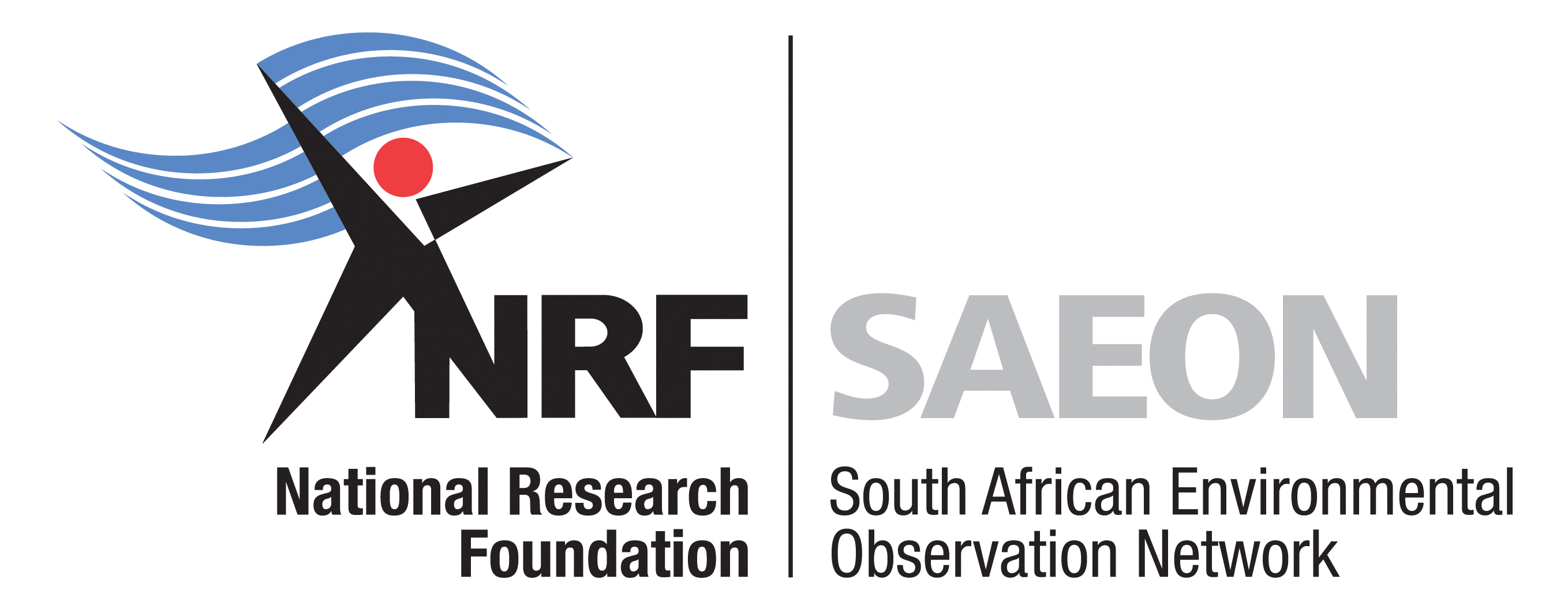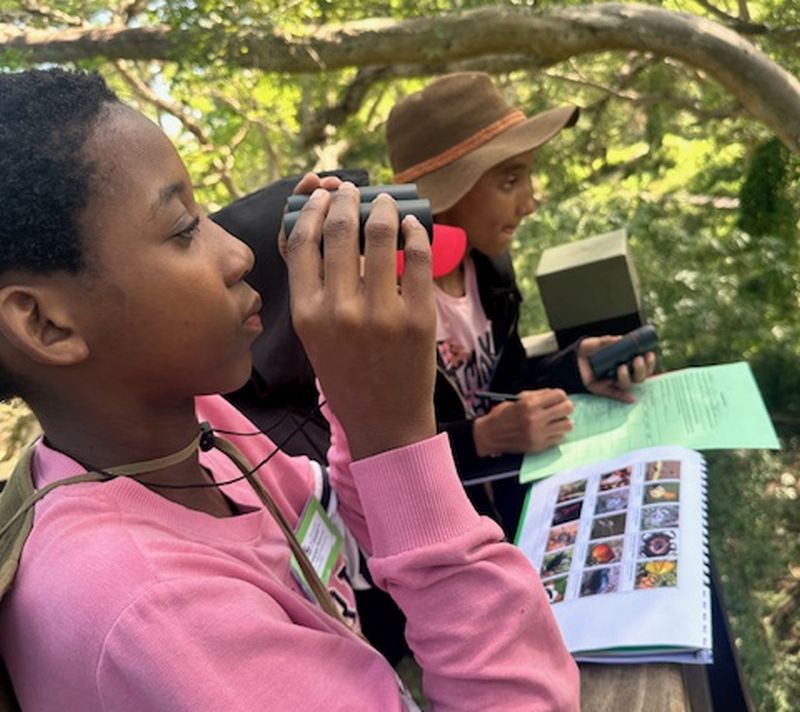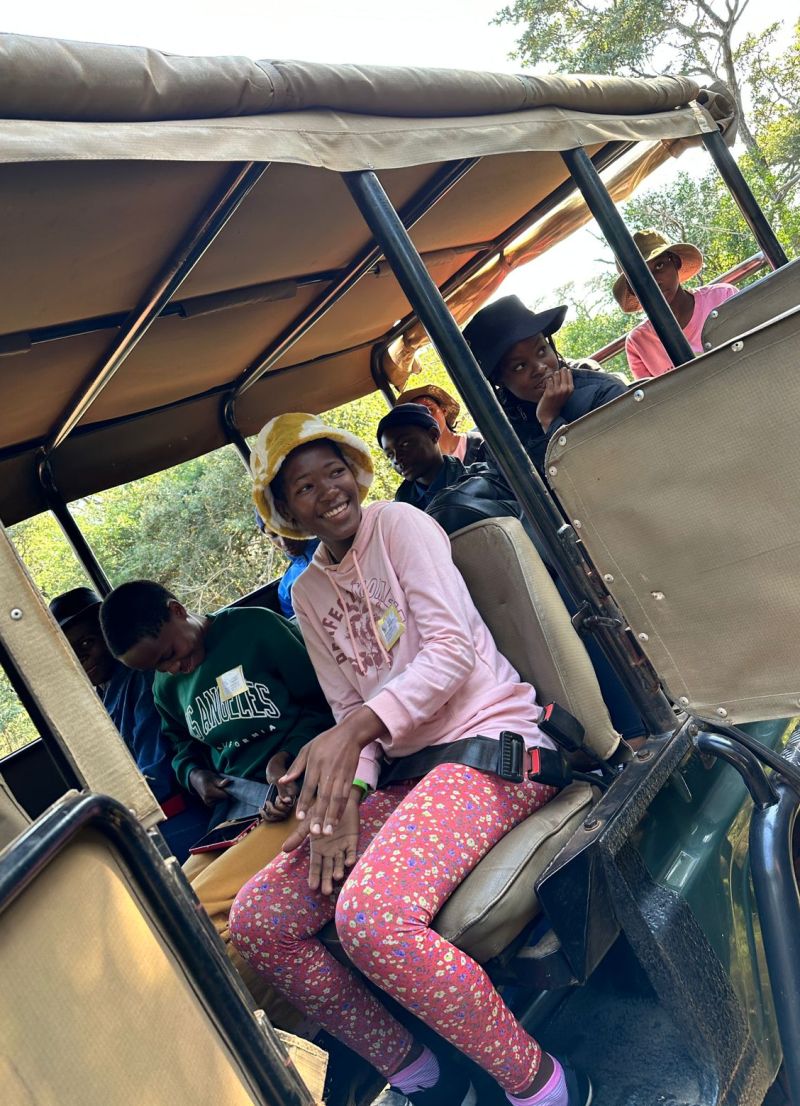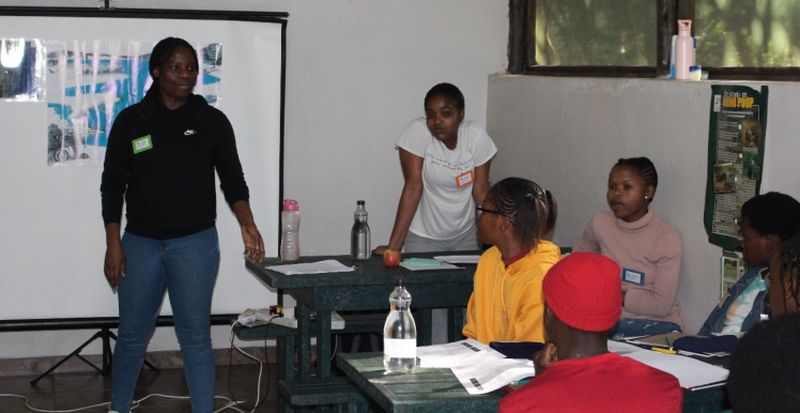eNews
#03 2024
‘I learnt how to think like a scientist’
By Nozipho Mahlanze, Science Engagement, Grasslands Node, NRF-SAEON
What is science? This was a question posed to 19 Grade 9 learners selected from four deep rural schools in the Umhlabuyalingana Local Municipality within the Maputaland Coastal Plain.
The occasion was the Grassland Node’s first official Science Camp for Grade 9 learners which took place from 18 to 21 June at Mkuze Game Reserve and hosted 19 learners and four educators from Langelihle, Inkosi Moses Zikhali, Justice Nxumalo Technical and Inkosi Mpiyake High Schools situated within the Maputaland Coastal Plain. None of the learners had ever visited a “Big Five” game reserve before, or any reserve for that matter.
The camp activities began with a picture-building icebreaker exercise. Learners were asked to draw pictures depicting environmental concerns near their home or school and Lake Sibaya and add their drawings to the picture-building poster. Each learner had to explain what their concern is.
To inspire learners to think carefully about their future and aspire to succeed, a career interest activity was then facilitated to reveal the learners’ career choice profiles. This was complemented by a goal-setting activity to identify their education goals for this year, for matric and for the next five years. They had to think carefully about how they were going to achieve each goal.
After a good night’s sleep and some chilly showers, the early morning session was used to explore the theme of the camp – biodiversity. As a key aim of these camps is to develop the learners’ science skills, they were introduced to the scientific method and important steps to follow in scientific inquiry. To reinforce the theoretical knowledge shared, a practical mini research project was implemented focusing on observations of species and ecosystems diversity. In collecting the data, they learnt how to use certain tools and equipment used by scientists.
The learners were divided into four groups before they ventured out into the great outdoors in two game drive vehicles. Their assignment was to observe different ecosystems and compare different species on the game drive to their designated “research sites”, each of which represented a different ecosystem.
At the designated research sites, learners engaged in hands-on group activities, using the scientific method to collect data that would enable them to assess the four different ecosystem types – grassland, fig forest, wetland and sand forest. The biodiversity indicators that were recorded included the number of animals spotted/identified in different classes within the first 20 minutes. After this a vegetation assessment was done to record species in different classes of vegetation. Learners were guided in capturing, processing and visualising their data.
The culmination of the learning process was when learners presented their group’s findings to their peers on the last day.
The participating learners had next to no or very limited experience with computers. A rapid introduction to PowerPoint and Excel in a mini-computer workshop achieved astounding results given this was the first time the learners had used these programs.
They learnt how to enter data on laptops and make sense of the data they collected. Each group came up with unique questions and hypotheses they wanted to answer, using some or all the data collected from all the groups. The learners’ excitement mounted when they were introduced to graphs, transforming their data into something visual and appropriate for their presentations.
Citizen science
Citizen science is a great way to encourage observation of the natural environment. As an additional skill the learners could take home and use, they were introduced to iNaturalist, encouraged to download the app and participate in the SAEON national competition, where learners capture and upload pictures on the app.
The impact of the camp was that the learners were exposed to fieldwork and computer skills, which promoted their critical thinking, problem-solving and decision-making skills. Learners were able to observe various species, explore, collect data and analyse the data using research equipment that they may not be able to access in a school setting. Learners gained computer skills which enhanced their ability to complete assignments, conduct research and engage in online learning platforms.
While it is impossible to master computer skills in such a short time, the camp served to expose learners to the amazing possibilities available in Excel and PowerPoint, which may motivate some of them to self-learn if they have access to computer resources.
Overall, the NRF-SAEON Grasslands Node Science Camp was a transformative experience, equipping grade 9 learners with important scientific skills and promoting a deep appreciation for science and the natural world around them. Of course, a definite highlight was being in a game drive vehicle with experienced guides from the area sharing their knowledge, as none of the learners had visited a game reserve like Mkuze before.
Empowering young minds to make crucial choices
Empowering young minds to make informed choices about their careers and subjects is crucial to their development. Learners are expected to make important choices when they get to Grade 10, including whether to opt for the Science Stream with key subjects like Mathematics, Life Sciences and Physical Sciences, or go with the Commerce or History Streams.
The camp helped them gain a clearer understanding of their interests and the steps needed to achieve their career goals. It is important to empower these young minds with valuable information and expose them to science, the natural world and scientists.
Finally, as a science engagement practice, on the last day learners were asked to give honest feedback using the evaluation form to help the science engagement team measure the programme’s impact. In their feedback, the learners and educators had this to say about the Mkhuze Science Camp:
- I have learnt how to use a computer, GPS and how to collect and analyse data.
- Changing perception from understanding that nature is there for research or observations, not for consumption.
- I have learnt how to collect data and present it in the form of a table.
- I learnt how important it is to socialise, meet different people, learn new things and communicate with others.
- I liked the game drive most because that gave us a chance to learn various interesting facts about different animals and we got a chance to see different and interesting animals.
- Thank you all for this opportunity to learn more that may be useful in the future.
- Good programme, keep up the good work, the facilitators were friendly, treating us in a good way and they were so amazing to us.
- All facilitators were doing a great job, and they were very patient with us.
- I will say this was a successful camp; we learnt more, our observations will take us far and also doing research in future.
- I learnt how to think like a scientist.
Learners drawing and building a composite picture of environmental concerns around Lake Sibaya.
A learner gives feedback on the picture-building activity.
Learners use binoculars to observe animals.
Learners enjoying the educational game drive around the reserve.
Learners counting and measuring vegetation species.
A Grade 9 learner presenting the results of her group’s research project.
The Grassland Node’s science engagement officer, Nozipho Mahlanze (left), engaging with learners.
